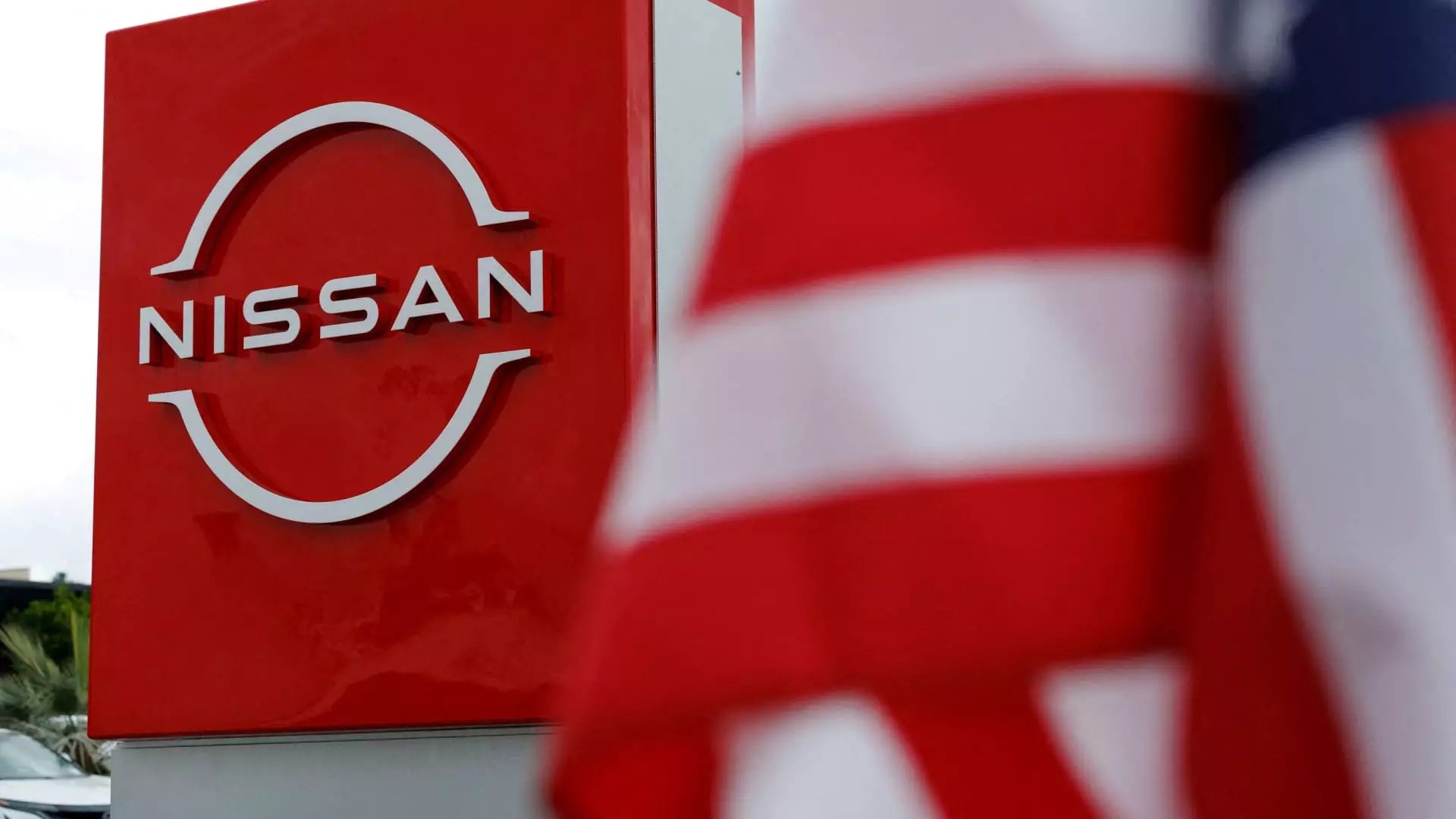Nissan, once a beacon of innovation and production prowess in the automotive industry, finds itself navigating a tempestuous sea fueled by external tariffs and shifting market dynamics. Christian Meunier, the company’s current Americas leader and chairman, is thrust into a pivotal role charged with steering Nissan through turbulent waters that have been exacerbated by President Donald Trump’s imposition of a hefty 25% tariff on auto imports. This environment of heightened tariffs presents a critical moment wherein Nissan aims to not merely survive but instead “max out” production at its Smyrna, Tennessee, plant. The stakes are high, and the strategies employed could determine the future trajectory of this automotive giant.
The Power of Domestic Production
Nissan’s ambitions to ramp up domestic production underscore a return to its roots—focusing on local manufacturing to enhance supply chains while mitigating the disruptive impact of tariffs. Meunier noted that the Smyrna facility is already equipped to manufacture a staggering 640,000 vehicles annually. Yet, last year’s production figures indicate that the plant only hit about 314,500. This underutilization begs the question: why isn’t Nissan maximally leveraging its existing capacity to bolster the U.S. market?
The answer perhaps lies in the broader industry shifts and a reactive posture towards external pressures. While tariffs are undoubtedly a motivating factor, they also reveal a significant weakness in Nissan’s production strategy. The aim to “max out” the Smyrna plant is laudatory but must be met with concrete actions, swift transition plans, and a tactical approach to the product lineup. A more proactive stance could not only shield Nissan from tariff repercussions but also help recapture market territory lost in recent years.
New Products and Market Responsiveness
Meunier’s focus on rejuvenating Smyrna’s status as a manufacturing powerhouse includes introducing hybrid models and expanding product lines—essential steps toward adapting to contemporary consumer trends centered around sustainability. This pivot towards hybrid production exemplifies Nissan’s recognition of changing buyer preferences and the necessity to innovate in line with environmental considerations. However, transitioning to hybrid and electric vehicles demands not just ambition but an exuberant commitment to research and development—a promise that Nissan must fulfill to regain its relevance in an ever-evolving marketplace.
While aiming to diversify product offerings, the financial underpinnings of these aspirations need to be examined. Meunier’s vision for introducing an Infiniti model to U.S. production is intriguing yet dependent on broader market acceptance and strategic investment in marketing. Unless Nissan is willing to forge ahead with compelling narratives about these new vehicles, simply adding more models might not produce the anticipated increase in sales and could lead to further inventory issues.
Flexibility and Speed: The New Competitive Edge
Importantly, Meunier articulated the notion of flexibility—specifically, an agility to adapt production schedules and processes, which is critical in an industry characterized by rapidly shifting consumer expectations. This flexibility isn’t just favorable; it’s mandatory in a market where competitors are eager to snatch up consumer attention with innovative products and technologies. The need for dynamism in production not only champions a stronger positioning against competitors but also indicates a keen awareness of the industry’s inherent unpredictability.
However, as ambitious as these plans sound, they must move hand-in-hand with clear strategic foresight. Without a defined roadmap and understanding of when and how to scale operations effectively, Nissan runs the risk of overpromising and underdelivering, further straining its reputation and financial health.
The Risk of Tariff Impact
Despite protests of potential “solutions that don’t hurt completely,” the tariffs imposed on imported vehicles and parts remain a major concern for Nissan. The company has articulated the detrimental effects these tariffs could have on budgetary planning and operational effectiveness. In this atmosphere of high import duties, Nissan’s existing reliance on Mexican production for certain vehicle lines necessitates careful balancing. A recalibration towards domestic production is not just an avenue for growth but a means to counteract vulnerability to trade disputes and tariffs.
Moreover, the impending increase in auto parts tariffs could exacerbate existing challenges for Nissan. Given the multidimensional nature of the automotive supply chain, each component—largely manufactured through intricate international networks—can expand costs and complicate pricing strategies. Thus, Nissan’s ability to navigate these uncertainties becomes a defining factor in their operational success.
A Cautious Optimism in the Future of Nissan
Nissan is currently at a crossroads: its legacy as a frontrunner in automotive manufacturing is under pressure, yet the roadmap laid out by Meunier hints at a renaissance, if executed efficiently. The challenge lies in the balance between ambition and reality, particularly in the operational adjustments necessary to align with both market demands and external economic pressures. If Nissan’s leadership embraces this difficult journey with clarity and purpose, the company stands a resilient chance to not only flourish but also assert itself as a renewed competitor within the automotive industry landscape.


Leave a Reply